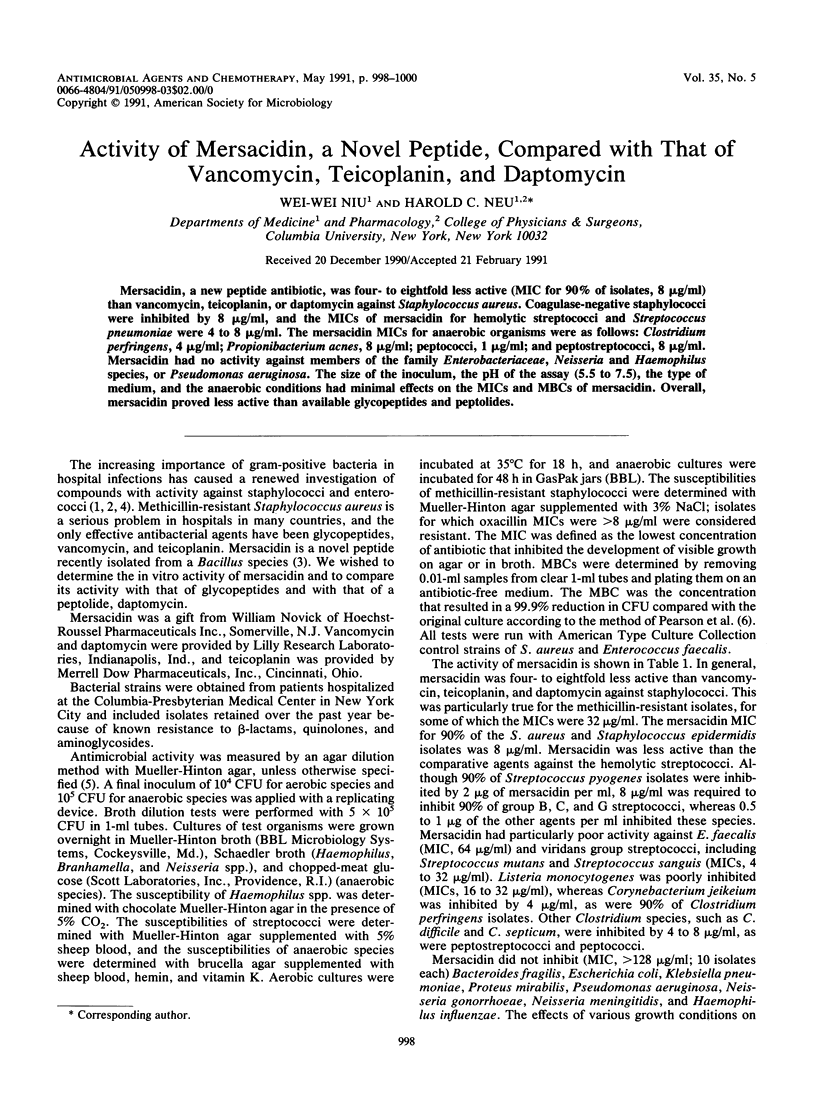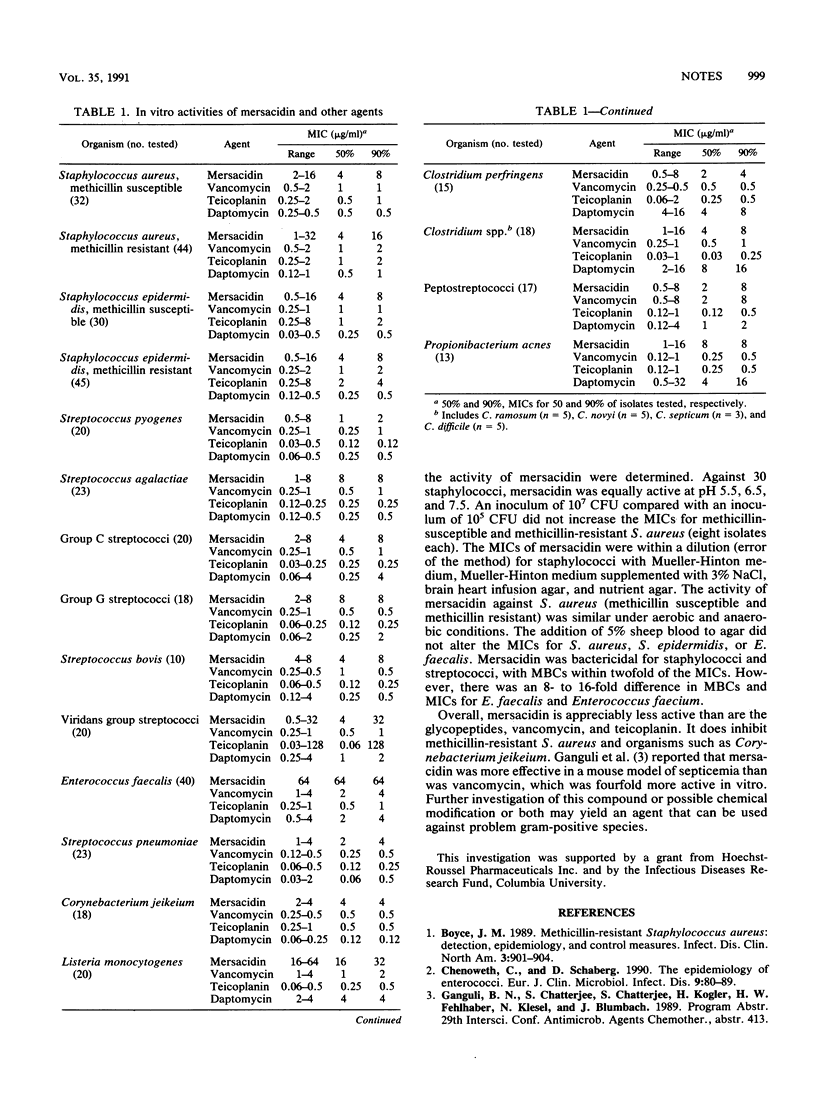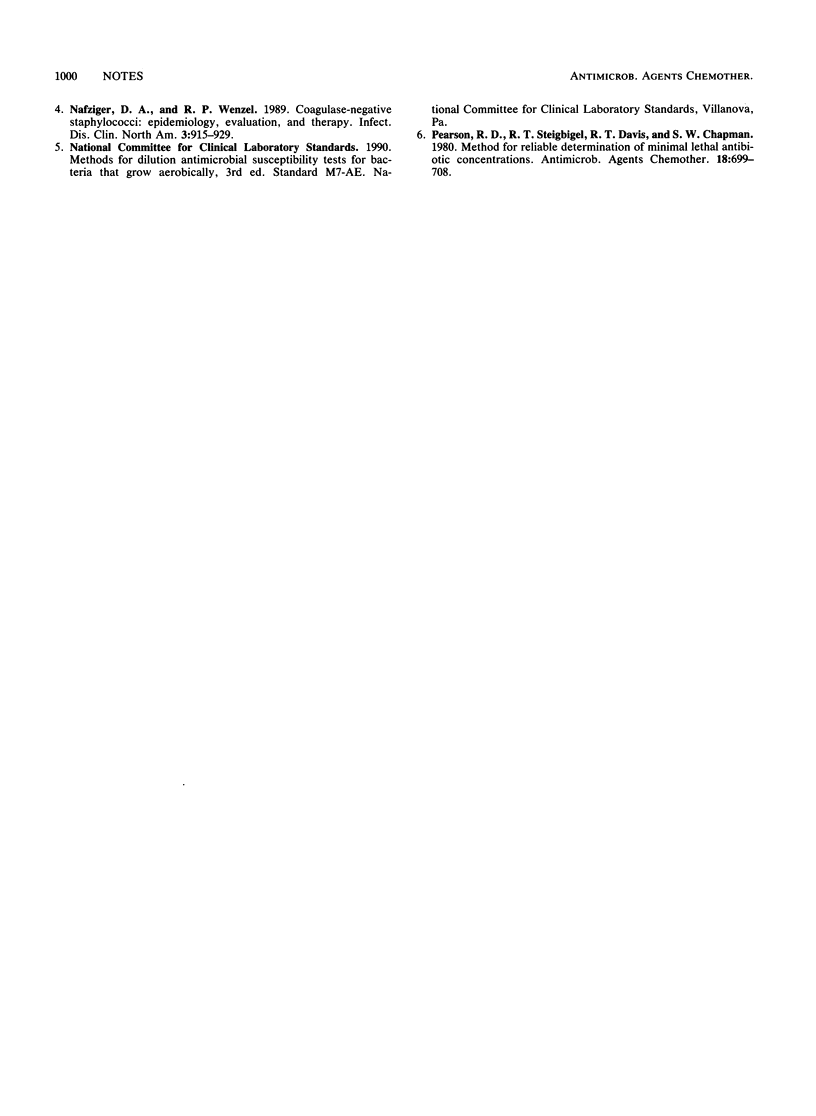Abstract
Mersacidin, a new peptide antibiotic, was four- to eightfold less active (MIC for 90% of isolates, 8 micrograms/ml) than vancomycin, teicoplanin, or daptomycin against Staphylococcus aureus. Coagulase-negative staphylococci were inhibited by 8 micrograms/ml, and the MICs of mersacidin for hemolytic streptococci and Streptococcus pneumoniae were 4 to 8 micrograms/ml. The mersacidin MICs for anaerobic organisms were as follows: Clostridium perfringens, 4 micrograms/ml; Propionibacterium acnes, 8 micrograms/ml; peptococci, 1 microgram/ml; and peptostreptococci, 8 micrograms/ml. Mersacidin had no activity against members of the family Enterobacteriaceae, Neisseria and Haemophilus species, or Pseudomonas aeruginosa. The size of the inoculum, the pH of the assay (5.5 to 7.5), the type of medium, and the anaerobic conditions had minimal effects on the MICs and MBCs of mersacidin. Overall, mersacidin proved less active than available glycopeptides and peptolides.
Full text
PDF


Selected References
These references are in PubMed. This may not be the complete list of references from this article.
- Boyce J. M. Methicillin-resistant Staphylococcus aureus. Detection, epidemiology, and control measures. Infect Dis Clin North Am. 1989 Dec;3(4):901–913. [PubMed] [Google Scholar]
- Chenoweth C., Schaberg D. The epidemiology of enterococci. Eur J Clin Microbiol Infect Dis. 1990 Feb;9(2):80–89. doi: 10.1007/BF01963631. [DOI] [PubMed] [Google Scholar]
- Nafziger D. A., Wenzel R. P. Coagulase-negative staphylococci. Epidemiology, evaluation, and therapy. Infect Dis Clin North Am. 1989 Dec;3(4):915–929. [PubMed] [Google Scholar]
- Pearson R. D., Steigbigel R. T., Davis H. T., Chapman S. W. Method of reliable determination of minimal lethal antibiotic concentrations. Antimicrob Agents Chemother. 1980 Nov;18(5):699–708. doi: 10.1128/aac.18.5.699. [DOI] [PMC free article] [PubMed] [Google Scholar]


